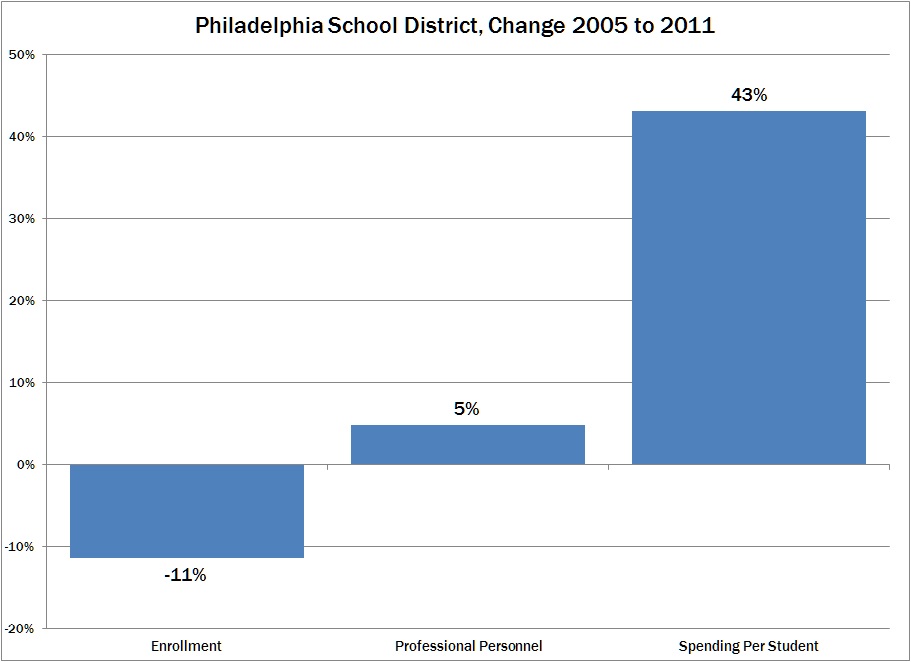Media
Who is to Blame for Schools’ Fiscal Woes?
Many advocates of more tax dollars for education blame Gov. Corbett and “cuts” for budgetary woes in Philadelphia and Reading school districts. But these complaints belie the facts.
Over last six years, from 2004-05 to 2010-11 school years, Philadelphia School District saw:
- Total spending up $531 million, or 27 percent;
- Total revenue up 24 percent—including a 22 percent increase in state aid and a 103 percent increase in federal grants;
- Enrollment decline by 11 percent;
- Professional staff grow by 5 percent (while support staff declined by 7 percent through 2009-12); and
- Spending per pupil grew by 43 percent, from $12,200 to $17,500 per student.
A recent EAG report looks at Philadelphia Schools’ labor contract and identifies numerous ways taxpayers are being ill-served. The latest contract includes:
- $14.4 million for a “cost of living” pay increase in 2010-11;
- $2.6 million for district contributions to the Legal Services Fund administered by the union;
- $165 million for health insurance for employees (employees’ contribution was $271,000 or less than 1 percent);
- $66 million for district contributions to the Health and Welfare Fund administered by the union; and
- $15.3 million for “severance pay.”

Looking at the Reading School District from 2004-05 to 2010-11, we see that spending increased at a faster clip than even Philadelphia.
- Total spending increased $88 million, or 62 percent;
- Total revenue grew 62 percent—including an 80 percent increase in state aid and a 143 percent increase in federal grants;
- Enrollment grew by 4 percent;
- Professional staff grew by 21 percent, and support staff by 24 percent through 2009-10—an increase of 416 staff over six years; and
- Spending per pupil grew by 55 percent, from $8,100 to $12,600 per student.
Dramatic growth in spending, not lost revenues after years of increases, combined with staffing increases that exceeded enrollment growth (or even occurred as enrollment declined) are the real cause of financial woes at school districts.